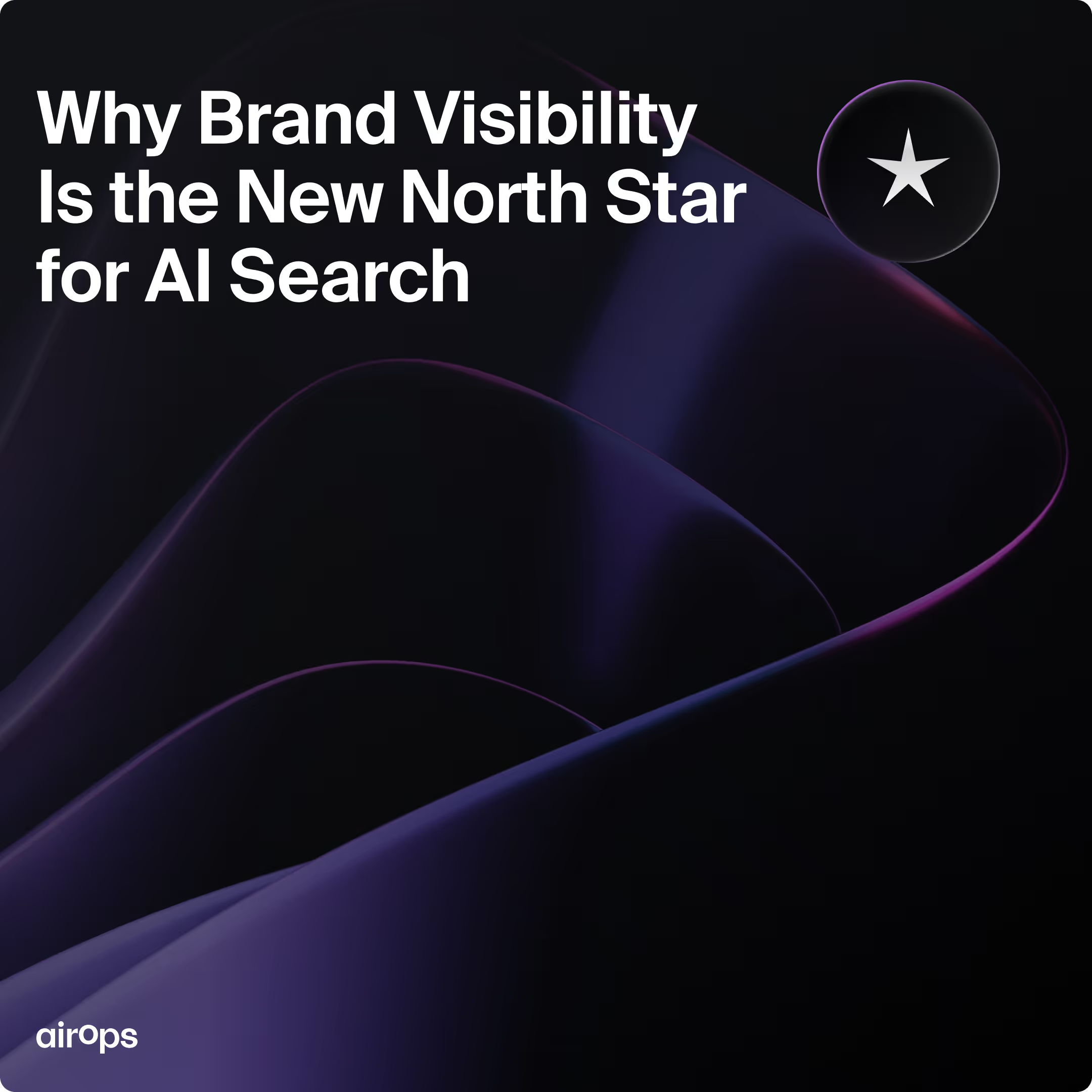Search is no longer a list of links. It's an interface for answers. Agents are now the first touchpoint. Not your homepage. Not your blog. Not your pricing page. Clicks are shrinking. Discovery happens without attribution. And the brands who get cited are the ones who get picked.
Here’s the real problem: AI doesn’t click. It answers.
And if your brand isn’t showing up in those answers, you’ve already lost.
.avif)
And even worse, as the mouth of the alligator expands between clicks and impressions, those teams lose influence internally. CFOs stop trusting the numbers. Sales doesn’t feel the lift. Content feels busy, but it's not driving revenue. The team gets stuck optimizing metrics that no longer matter.
However, if they measured how often their brand is referenced across AI agents and answer engines then that pain can be avoided. This is the next move for teams.
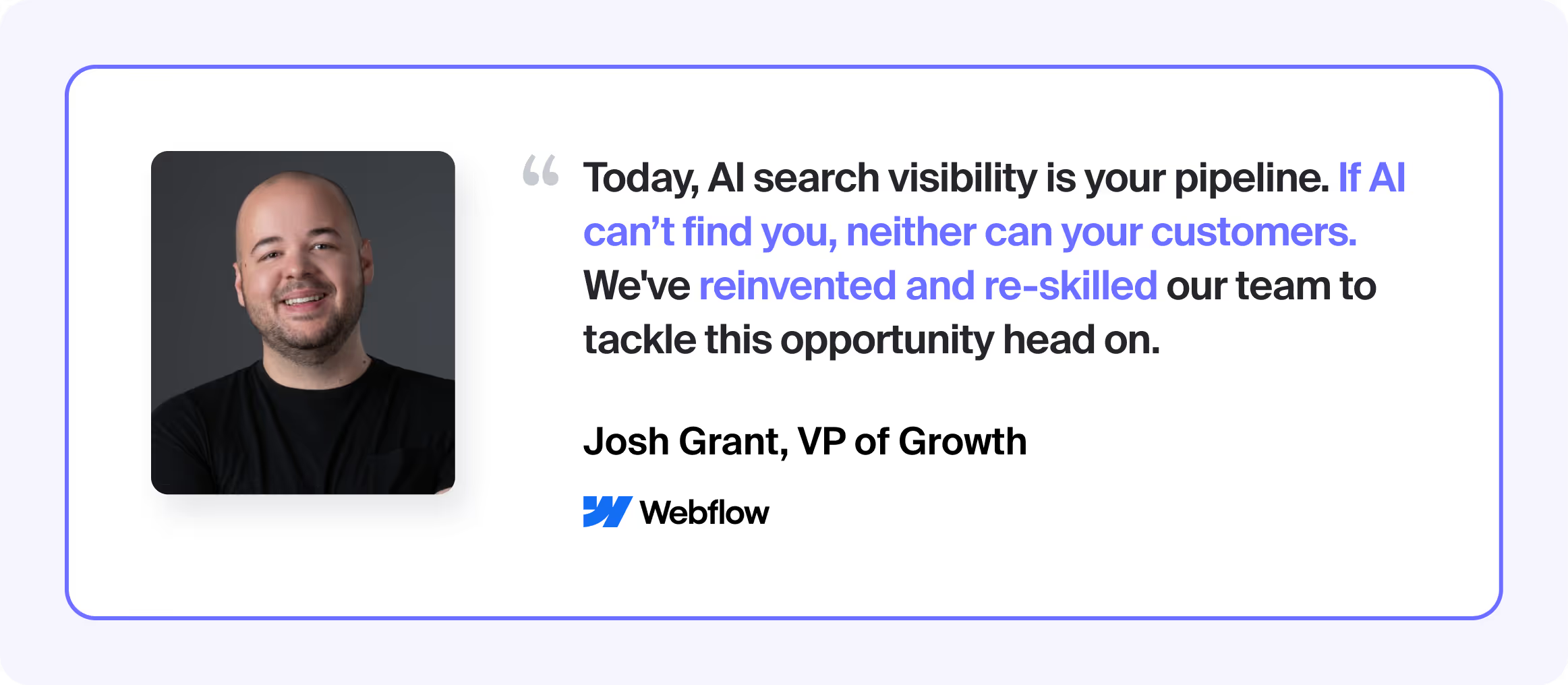
Brand visibility across AI search is your new North Star. Instead of chasing traffic, build a presence in the places where buying decisions actually start. That’s why leading teams are ditching outdated KPIs and aligning around one modern metric that actually reflects influence in the age of AI search.
In this post, you’ll learn exactly why a change is needed and the exact steps you can take to do it.
Brand Visibility: What It Means (and Why It Matters)
The Brand Visibility Score helps you quantify how often your brand is cited compared to the total relevant answer volume, factoring in share of voice, citation rate, and sentiment.
It measures your presence across AI-generated answers, LLM platforms, external sites, and forum discussions. It reflects how often AI agents recommend you, how frequently humans name-check you in decision threads, and how reliably your brand is associated with the “right answer.”
Brand visibility is your earliest signal of influence. It shows whether buyers are seeing, citing, and considering you before they ever hit your site. The more often you're surfaced, the more you're trusted. And trust is what converts visibility into real pipeline.
Unlike rankings or pageviews, brand visibility reflects credibility. Unlike MQLs, it’s measurable long before attribution shows up. It’s a forward-looking, durable metric built for the AI era.
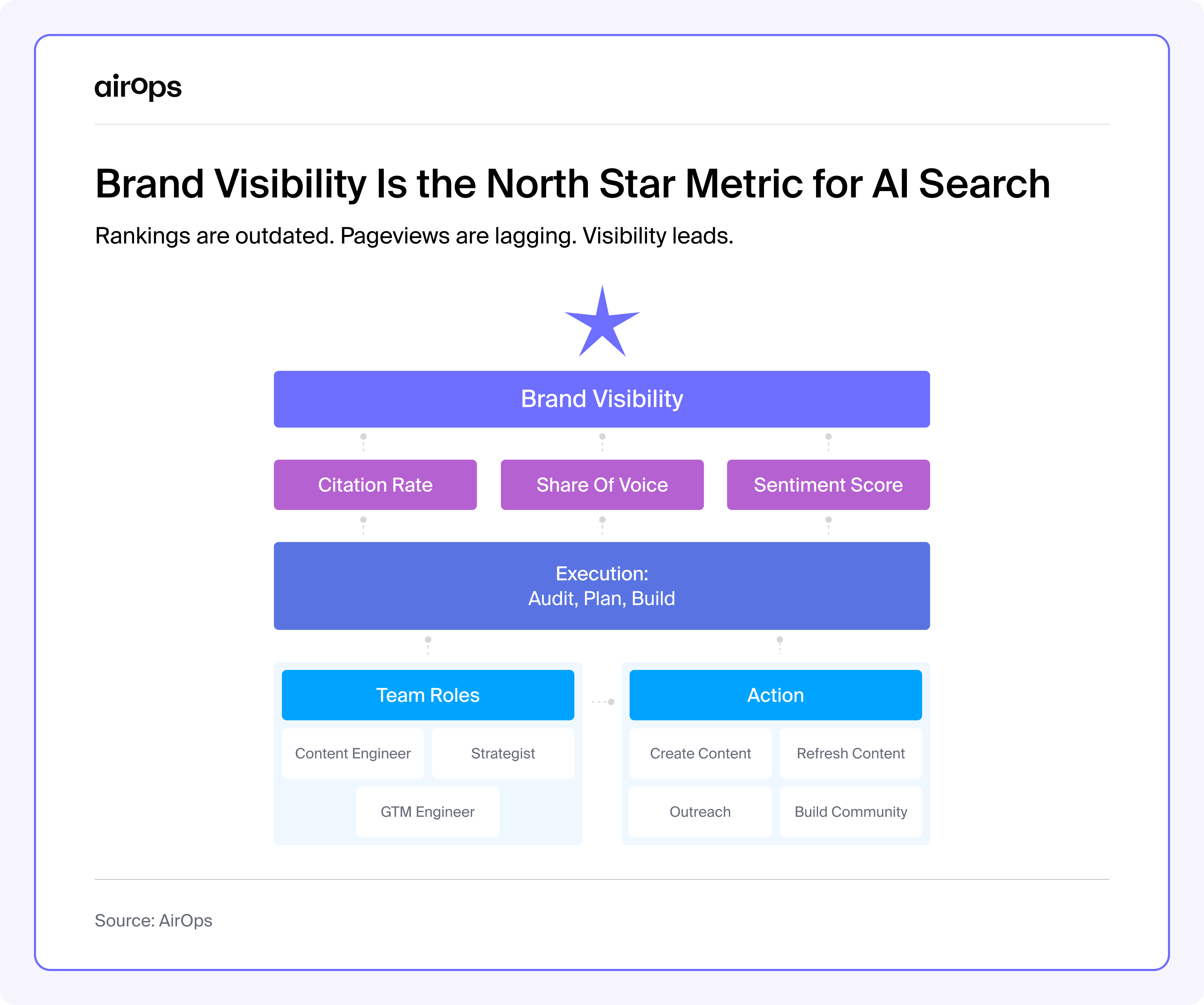
Brand Visibility Score = Your Influence Across AI Search
Here’s how it works:
- There’s a question or topic that your brand is relevant for
- Brand visibility score takes the answers mentioning your brand, and then divides that by the total number of answers
- Other metrics like your share of voice compared to your competitors, answers citing your domain, and the sentiment of the answers that mention your brand feed into it as well
Tracking this score helps you:
- Prioritize which content to refresh or rebuild
- Spot where your brand is getting left out of the conversation
- Understand which competitors are dominating agent visibility
- Align your efforts around what AI surfaces and not just what Google indexes
- Directly influence buying decisions around your brand
Turn your content execution into revenue, and know where you’re losing ground in AI search, find out how to win it back and take action fast at scale.
With AirOps, stack yourself against competitors, identify your blindspots, and respond quickly with structured content and outreach. In AI search, showing up is survival. Winning visibility is how you dominate.
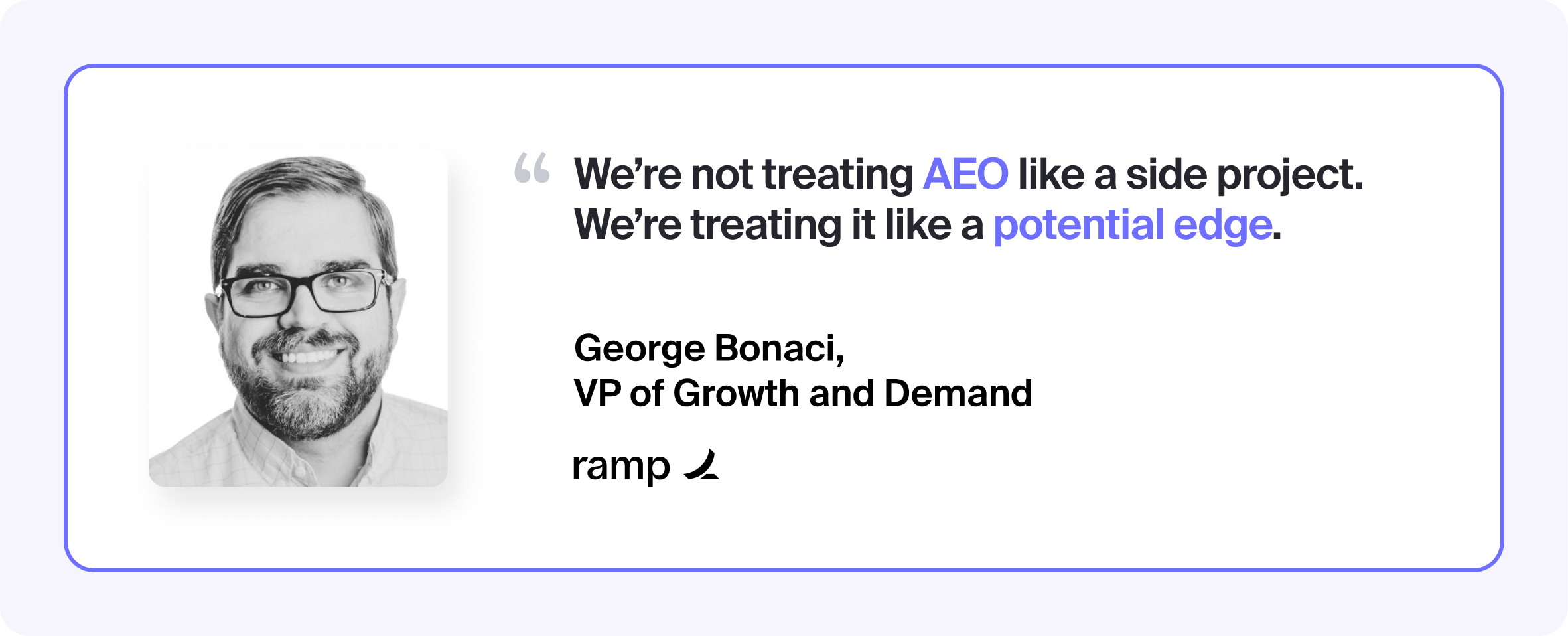
Why Traditional SEO Metrics Are Letting You Down
Legacy KPIs like pageviews and rankings no longer reflect reality. They’re misleading, lagging, and in many cases, actively harmful to decision-making.
- Pageviews are inflated with bots, bounces, and misaligned clicks.
- Traditional rankings don’t guarantee surfacing in AI-driven interfaces.
- CTR is irrelevant when zero-click answers dominate the SERP.
- Leads and MQLs are often vanity metrics that don’t track back to revenue.
As a result, marketers are optimizing for noise, not impact.

Google is still dominant, but it’s not growing like it once was. We’ve already hit the AI search tipping point.
- In January 2025, AI Overviews appeared in less than 5% of Google results.
- By July, they now show up in over 25% of searches—and 50% of all U.S. Google queries now include AI summaries.
- OpenAI handles about 1 query per American per day, and since roughly 50% of Google searches now feature AI-generated Overviews, at least 60% of U.S. Google search queries are being influenced by AI.
The second half of 2025 will be the moment most websites feel the drop. And when that happens, dashboards that track clicks instead of citations will go dark.
The takeaway: If you're still measuring what made sense five years ago, you're misaligned and invisible.
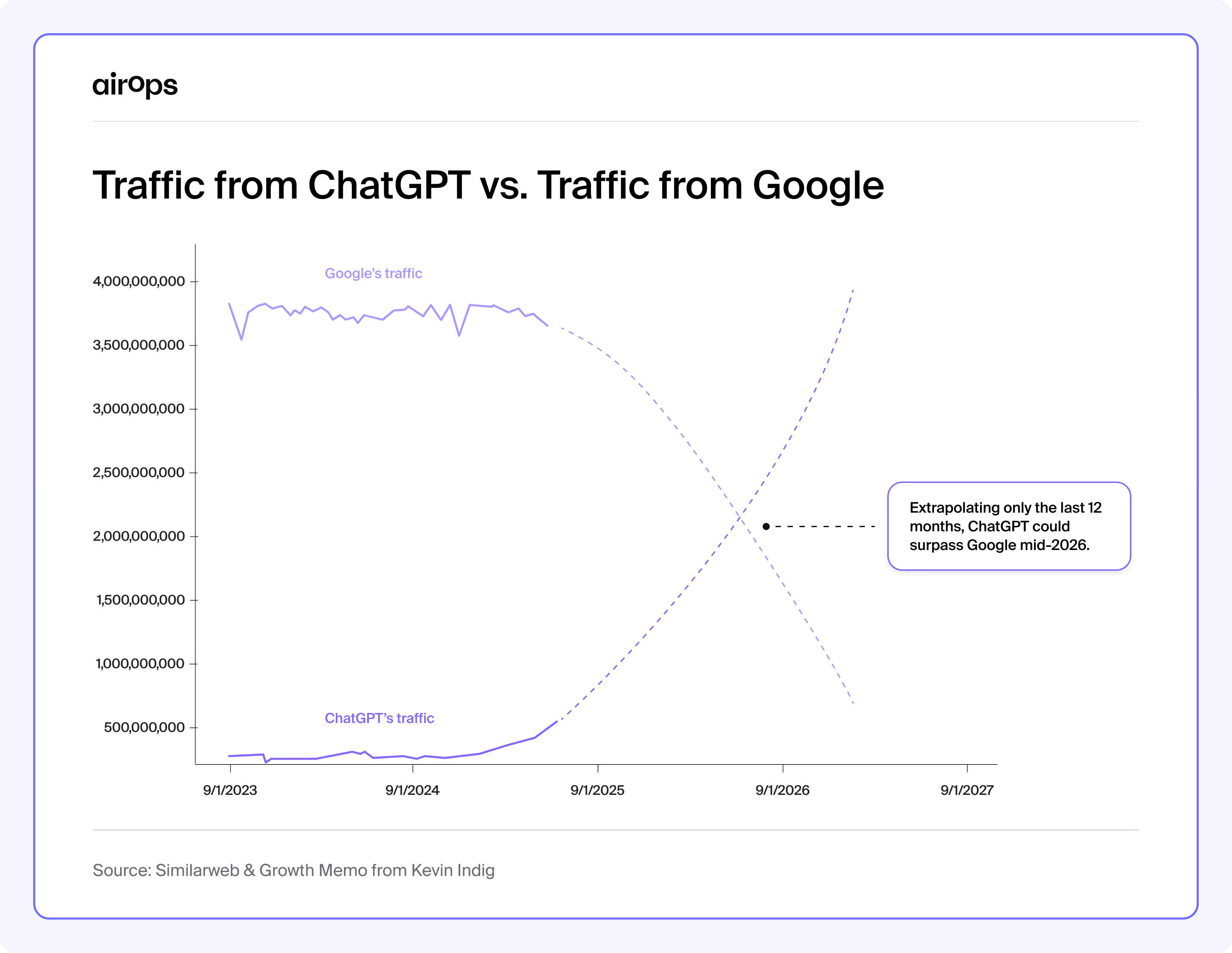
Why Shrinking Traffic Is An Opportunity
AI search has flattened the top of the funnel. As noted above, most clicks end without attribution, without links, and without any need to click through. Clicks have collapsed.
What site traffic remains is gold: fewer visitors, but with much higher intent.
To win, you need to be present in the places where decisions get made:
- Google’s AI Overviews
- ChatGPT, Gemini, and Perplexity responses
- Reddit threads and comparison forums
- Glossary hubs, expert roundups, and evaluation checklists
If your brand isn’t cited, mentioned, or surfaced—you’re invisible. Rankings don’t matter if the agent skips your site.
To compete, your content must:
- Answer high-intent, bottom-funnel questions
- Persuade buyers in side-by-side evaluations
- Convey trust, clarity, and domain expertise
- Work seamlessly for both LLMs and humans
And find a point of view that only your brand can answer.
“You need to figure out what content to bet on. What has the potential to drive a lot of traffic? What can your company create that no one else can?” — Emily Kramer
Most importantly, it needs to be structured, extractable, and refreshable. Without those traits, AI ignores it and buyers never see it.
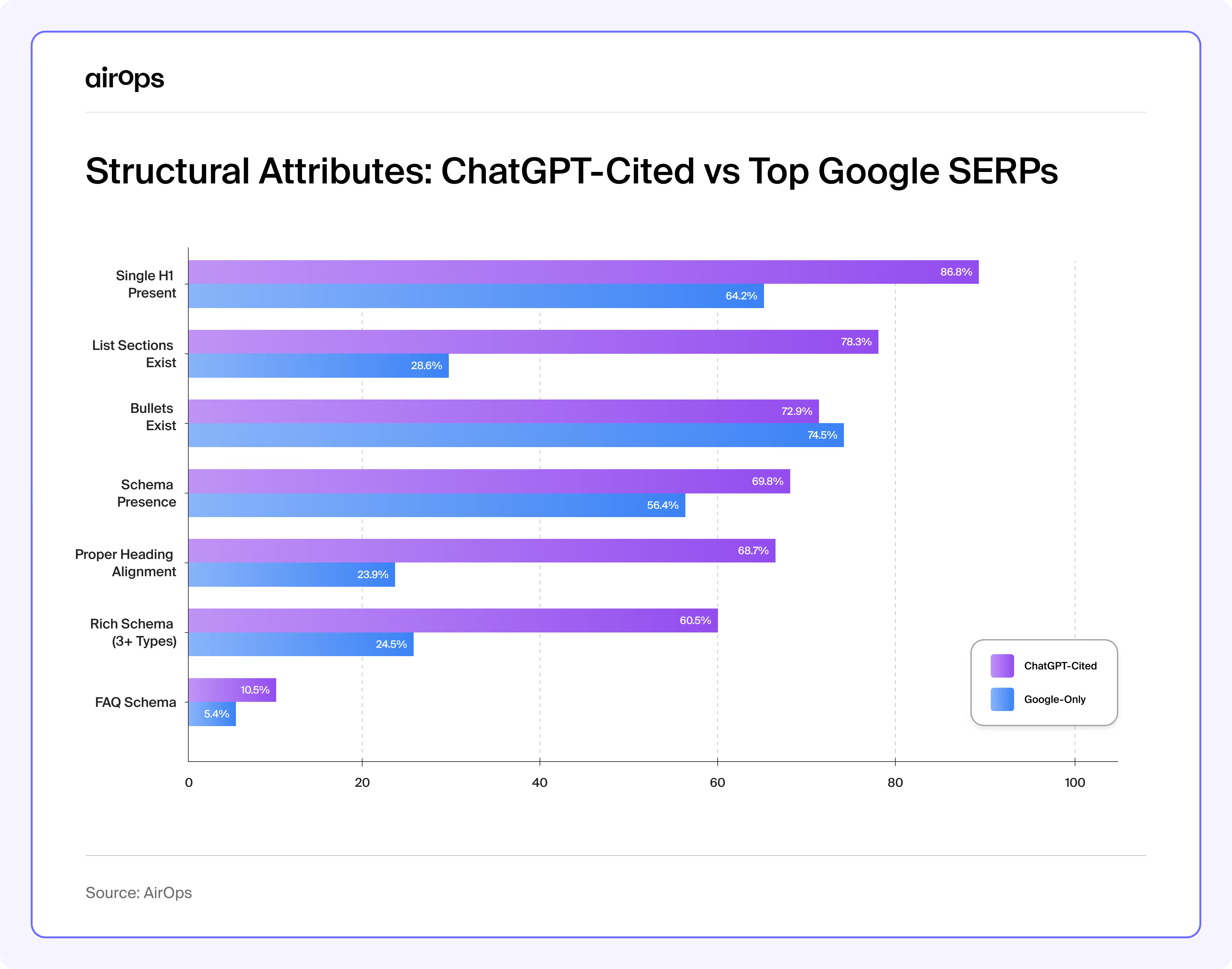
How Best-In-Class Teams Are Building a Visibility Lead (The Strategy + Execution Plan)
Best-in-class teams are going beyond shifting to AI search, but are looking for an edge to outperform their past results. They’ve replaced siloed workflows with agent-aware systems. And they’ve built leverage through clarity, not headcount.
So how do they do it?
1. Strategy: Set the Visibility Agenda
You can’t win what you don’t measure. Winning visibility is no longer about writing more, but about showing up more where it counts. Leading teams start by defining the queries, topics, and buyer moments that matter most, then benchmark their presence against competitors. Visibility becomes the North Star.
They ask:
- Where are we cited today?
- Where are we absent but should be present?
- Which agents (ChatGPT, Perplexity, Claude, etc.) are mentioning or ignoring us?
From there, the strategy isn’t just to create more content. It’s a shift to earn presence and citations across surfaces.

2. Metrics: Track What Actually Drives Pipeline
If agents don’t cite you, buyers don’t see you. And if you're not measuring that, you’re missing a key line of sight.
Legacy metrics like pageviews, CTR, and MQLs might look good on dashboards, but they don’t reflect how buying decisions are made in the era of AI search. What matters now is visibility which is a leading metric of influence.
.avif)
“CMOs who rely on traffic dashboards are going blind. CFOs and Boards now want proof of influence and pipeline efficiency, not traffic volume.” — Guillaume Cabane, Hypergrowth Partners
These modern metrics reflect where decisions start and not just where visits end.
The Visibility Scoreboard: Metrics That Matter
At the core of AI search is the Brand Visibility Score:
- Answers mentioning your brand ÷ Total answers for your space
This tells you how often your brand shows up when it counts. A higher score means more exposure in high-intent, AI-driven decision moments.
Supporting Metrics:
- Citation Rate: % of LLM answers that mention or link to your brand
- Sentiment Score: (Positive + 0.5 × Neutral mentions) ÷ Total mentions
- Share of Voice: % of total citations compared to competitors
Together, these form your visibility stack as a set of KPIs that actually map to influence, awareness, and pipeline potential.
3. Execution: Build for Agents, Not Just Audiences
Modern AI search plays to trust and extraction. Winning teams don’t wait for quarterly planning They ship immediately with AI content workflows and acting on brand visibility signals. Here’s how the best teams act on those signals:
Audit to see where you stand
Track how often your brand is surfaced in LLM answers and AI Overviews. Identify citation gaps, sentiment shifts, attribution errors, and how often competitors are mentioned in the same answer sets.
Plan to identify the opportunities
Prioritize high-intent, mid-funnel topics where buyers are actively evaluating solutions. Organize these into clusters that support visibility and trust.
Build and ship structured content that surfaces
Reformat legacy content and publish new content using extractable answers, schema-rich layouts, and modular blocks built for both agents and humans.
That means shipping content like:
- Refreshed mid-funnel content built for surfacing
- Modular, reusable answers that agents can easily pull
- Off-site influence plays (Reddit, glossaries, citations) that reinforce domain trust
The engine here is workflow velocity and treating content like a product: auditing, creating, and optimizing content faster than competitors and aimed directly at LLM visibility.
Each of these pillars gives you a lever to pull: whether it’s identifying where you’re absent, refreshing the right pages, or structuring new content to win surfacing.
4. Team: Move from Headcount to Leverage
You don’t need a bigger team. You need better roles and systems. High-performing teams restructure around speed and surfacing.
Like Ramp and Webflow they invest in roles like:
- Content Engineers to build extractable, schema-rich blocks
- Content Strategists who own strategy, coverage tracking, competitive deltas
- People who know how to ship quickly and iterate without losing the thread
- Growth engineers to maximize your efforts
It’s time to upskill or stall out. These teams are learning fast, and executing even faster.
5. Grow: Actions that Earn Visibility
These are operating signals for how you’re performing across all organic surfaces. When visibility drops or citation rates decline, best-in-class teams are responding by:
- Create Content: Target questions where competitors appear but you don’t
- Refresh: Update existing pages to address questions where competitors are mentioned but you aren’t & close competitive gaps
- Outreach: Contact 3rd-party sites where competitors earn mentions to request inclusion
- Build Community: Engage authentically in forums and establish thought leadership
With metrics like Brand Visibiity, Citation Rate, Share of Voice, and Sentiment Score, marketing, content, SEO and growth teams can instantly see where they stand and what’s slipping and then take action.
Visibility drops or citation gaps become triggers for workflows: refresh a decaying cluster, run off-site campaigns, or spin up mid-funnel content that’s structured to surface. This goes beyond monitoring to a scoreboard for influence in the age of AI answers.
These are metrics your CFO, RevOps team, and board will care about because they actually correlate with pipeline.
Now, you need a focused sprint to turn these into momentum: one quarter, one system, and one outcome.
To help you do that, here’s a 90-day snapshot on how to rebuild for AI search, from quick wins to long-term edge:
%20(1).avif)
Win AI Search. Turn Visibility Into Action in One Platform.
Most marketing teams think traffic is the ultimate signal of success. So they pour time and budget into rankings, pageviews, and MQLs like it’s 2018. They’re still convinced that more content equals more pipeline.
But there’s a better way. Instead of chasing clicks that never come, modern teams are building for visibility on the platforms where buying decisions actually begin. They’ve ditched guesswork for metrics that actually move pipeline. And they’ve rebuilt their workflows to respond faster than the competition.
AI search is rewriting the rules of organic growth. If you’re not showing up in ChatGPT, Google AI Mode, and Perplexity, you’re invisible. AirOps is the only all-in-one platform build to win AI search.
We show you exactly where your brand stands, where competitors are beating you, and what to do about it. Then we help you take action by refining existing content, creating net new, and engaging in social conversations.
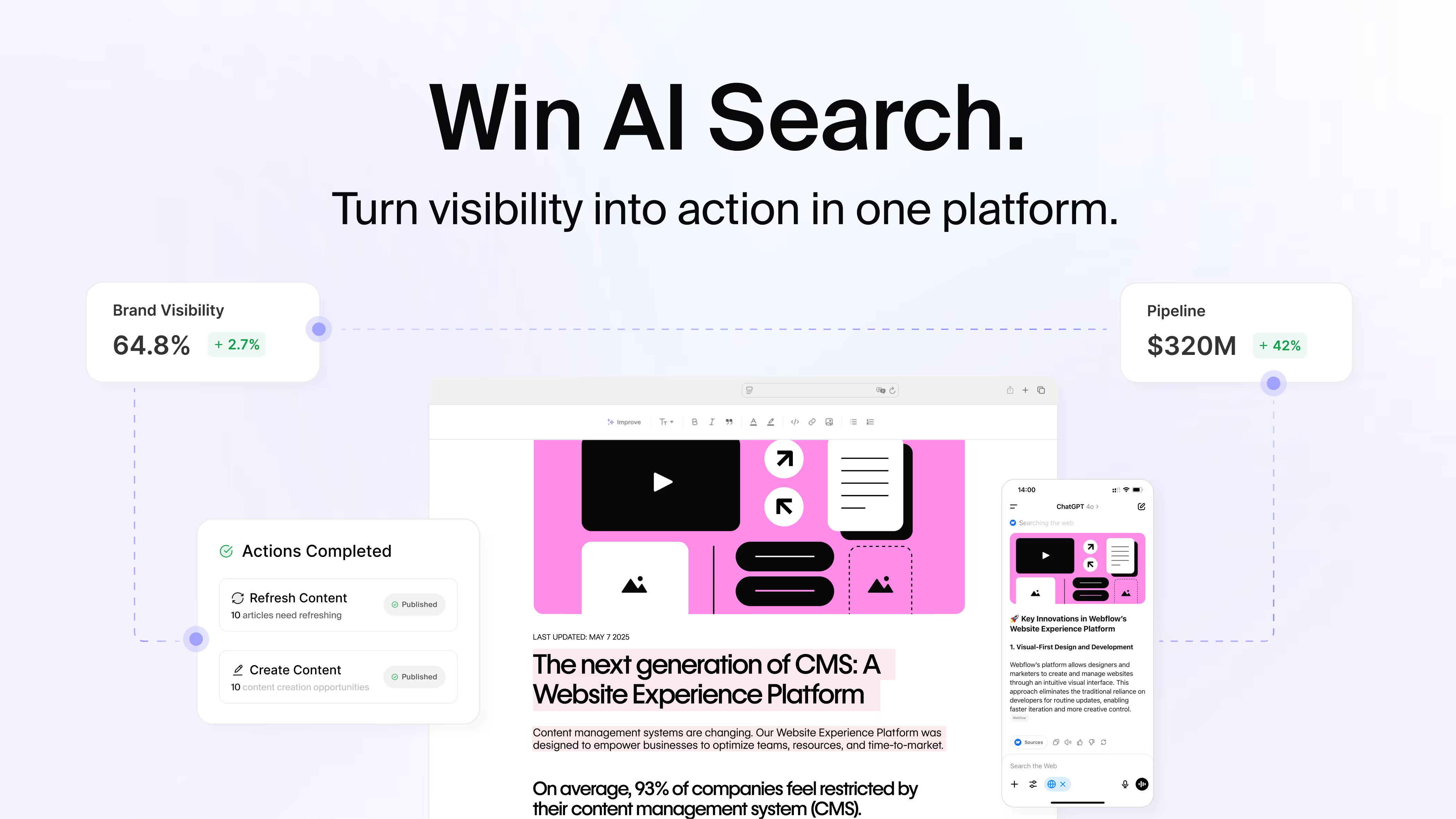
We’ve built a product to help teams like Webflow, Descript, Carta, and Gong move fast and turn change into business opportunities.
Let’s win AI search together.


